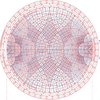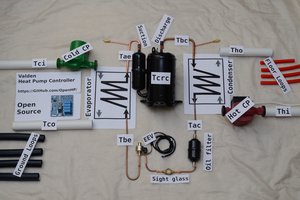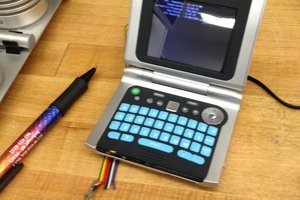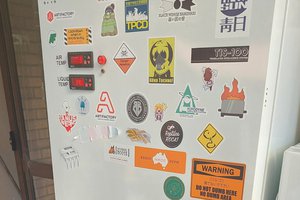Description:
UPDATE: BOTH APACHE AL13P & TRULAM TL-320B compatible.
Design & DIY files
https://www.dropbox.com/sh/y7e505zgkx504oo/AAA3ri2qAptyTXqPpXXD7rTZa?dl=0
I've taken a robust document laminator (AL13P or TL-320B) that features all metal construction with metal gears, silicone rollers and temperature control, and added features to make it more suitable and safer for toner transfer using readily available papers, especially magazine paper or http://PCBFX.com PULSAR products & Dry Transfers! Yellow EBAY Toner transfer paper works quite well. Note the thermal image indicating a 6% high roller temperature. Helps for precision work when presetting temperatures to suit different Toner brands. My Printer is an HP1102W. OEM or substitute Toner works fine.
Background:
I have been frequently frustrated by having to use a combination of clothing iron and document laminator as reliable results are ever elusive.
Converting a laser printer to direct PCB printing is complex and not a project I wish to entertain. It would be heavily mechanical and the results would still require post printing 'fusing' of the print onto the copper. I decided to bite the bullet and purchase the easy to modify Apache AL13P from Amazon to simplify and streamline my PCB making using non photographic methods. Have a look at my SMT PCB prototyping Hackaday project for more detailed usage pics & videos.
Powerful Capabilities:
Reliable, repeatable, cost effective and time effective toner transfer to single or double sided copper clad board up to 1/16" (or thicker) (1.6 mm) thick. The detail of the toner transfer method can be as good as 5 mil! http://PCBFX.com explains how to do this with 5mil detail with their enhanced papers. Thus, it is suitable for a lot of SMT applications as well. Yellow EBAY toner paper is also excellent.
I do single pass, double sided transfers, aligned/registered via 0.5mm - 0.8mm 'pinhole vias', built in to the layout at each PCB corner and then simple etching of both sides at once. This beats the multiple step, direct printing method which requires tricky, flip over & reprint alignment & resist curing for both sides of the printed board by baking or additional chemical baths before the etching. Also, direct printing requires a dedicated printer to hack apart, literally, as well as additional dedicated inks or toner/roller cartridges adding costs. This project only adds capability, it does not defeat the original purpose of the laminator and does not require expensive supplies, only paper!
Features:
1) Thermal sensor failure protection.
2) Speed control using multiple automatic fwd/rev passes suitable for synchronous AC motors.
3) Cool down function for rollers that over rides the heater AND keeps the rollers in motion for a fixed 16 minute period with an alert to shutdown after.
4) No other mods required . No roller tensioning required!
5) It takes less than 2 hours to make the modifications including building the kit.
6) It achieves 10 mil traces with 1 oz copper reliably.
7) Plug-n-Play operation, no soldering or modifications to laminator circuitry.
8) Fully reversible modifications.
9) Optimized for http://PCBFX.COM & magazine paper (eg. Pop. science mags or Harbor Freight Catalogs). Yellow EBAY toner paper is also excellent.
Specifications:
It operates between 320 F and 350 F to span the range of board stock from scissors cut-table thru 1/16" (or thicker) double sided transfers. HP Toner temps. Other brands may be a bit different. Use 380F for Brother Toner.
Net speed reduction is approximately 12:1 achieved by using recurring 5/8" forward and 1/2" linear reverse motions cycle with the rollers. Heater is OFF during reverse part of cycle to prevent roller hotspots.
This has the effects of applying multiple pressure and heat cycles to the toner transfer ensuring a good result without tampering with the 60 Hz synchronous motor operation & torque levels.
The net result is a single automated COMPLETE pass of the copper clad...
 mosaicmerc
mosaicmerc






 Gonzho
Gonzho
 Beaglebreath
Beaglebreath
 Mild Lee Interested
Mild Lee Interested
Intermittent reboots?
Works fine with the board away from the unit but not when installed?
You have induced current from emf spikes from the motor appearing on the io lines.
It's a very noisy area.
Add 0.1uf decoupling caps to all io lines, just as the schematic calls for on the temp input of the PIC.
Worked for me after hours of attempts of shielding and rewiring and relocating the mod board.
Snubber pairs across the motor relay contacts help bring the spikes down quite a bit, I used 0.22uf and 10 ohm